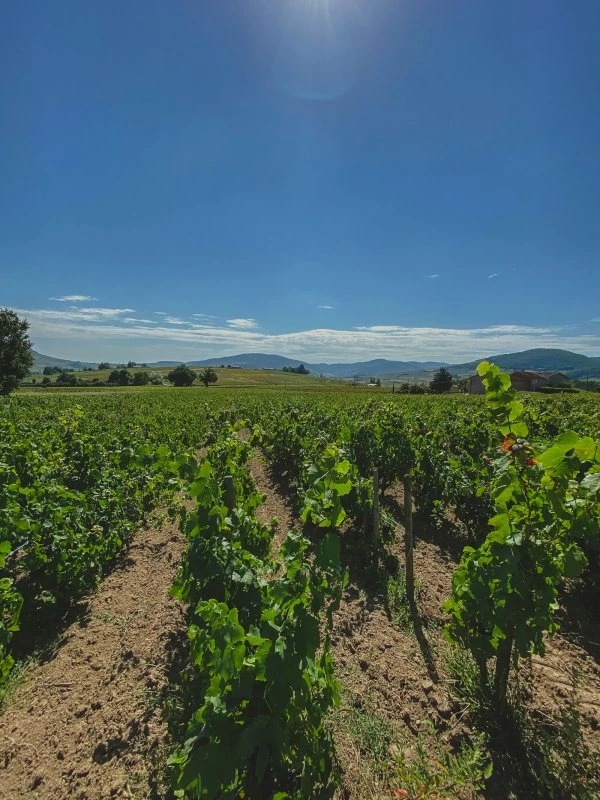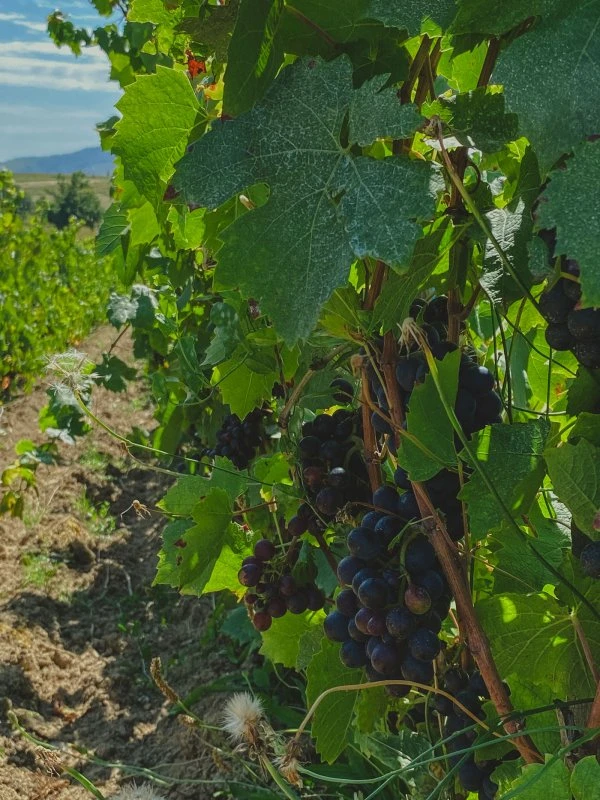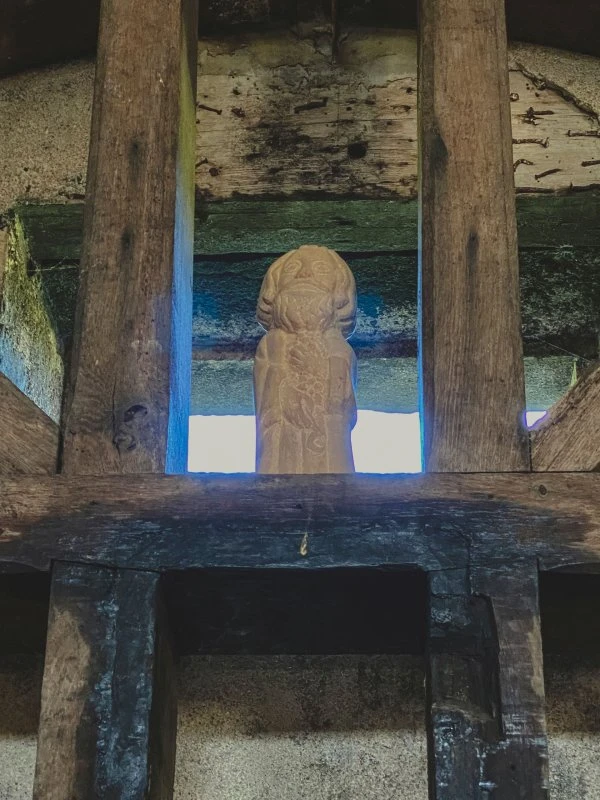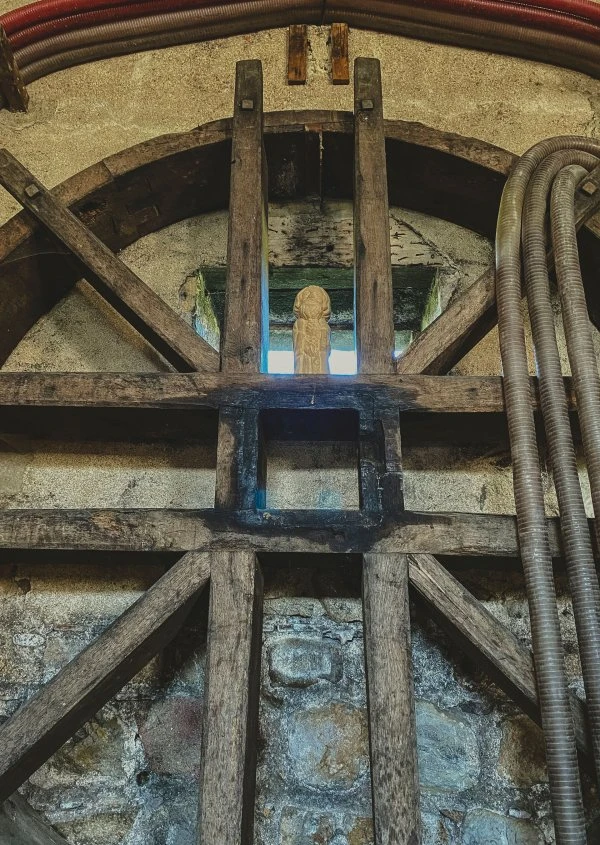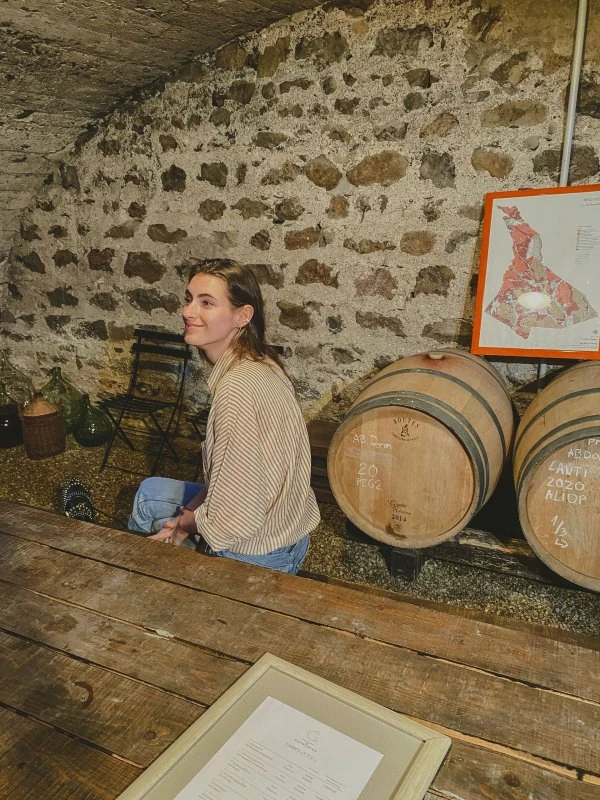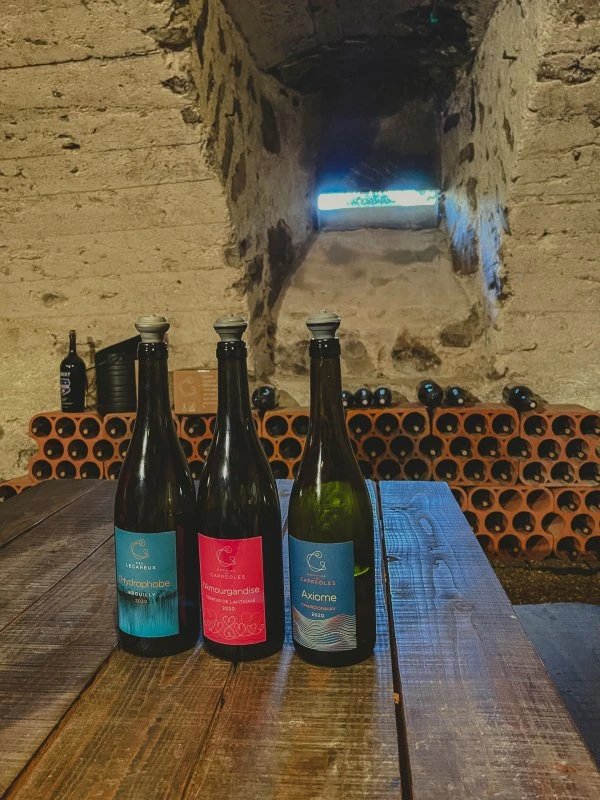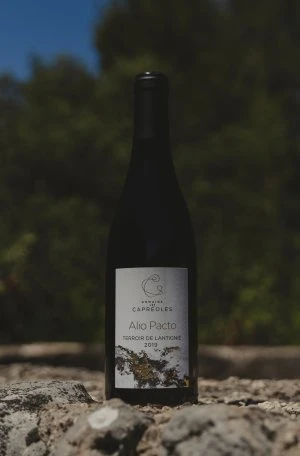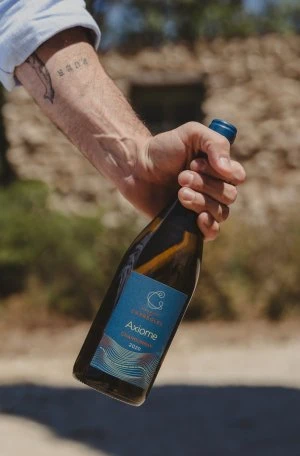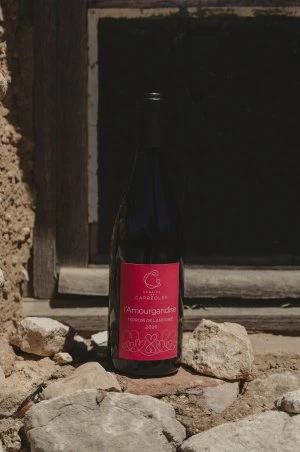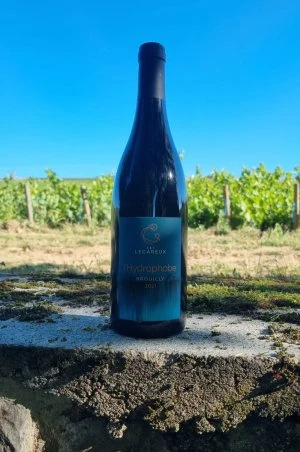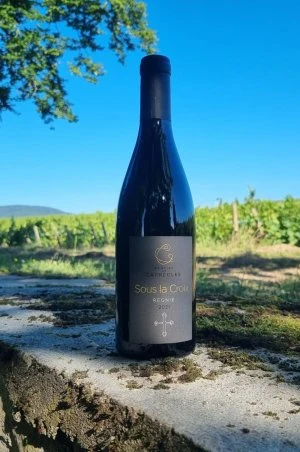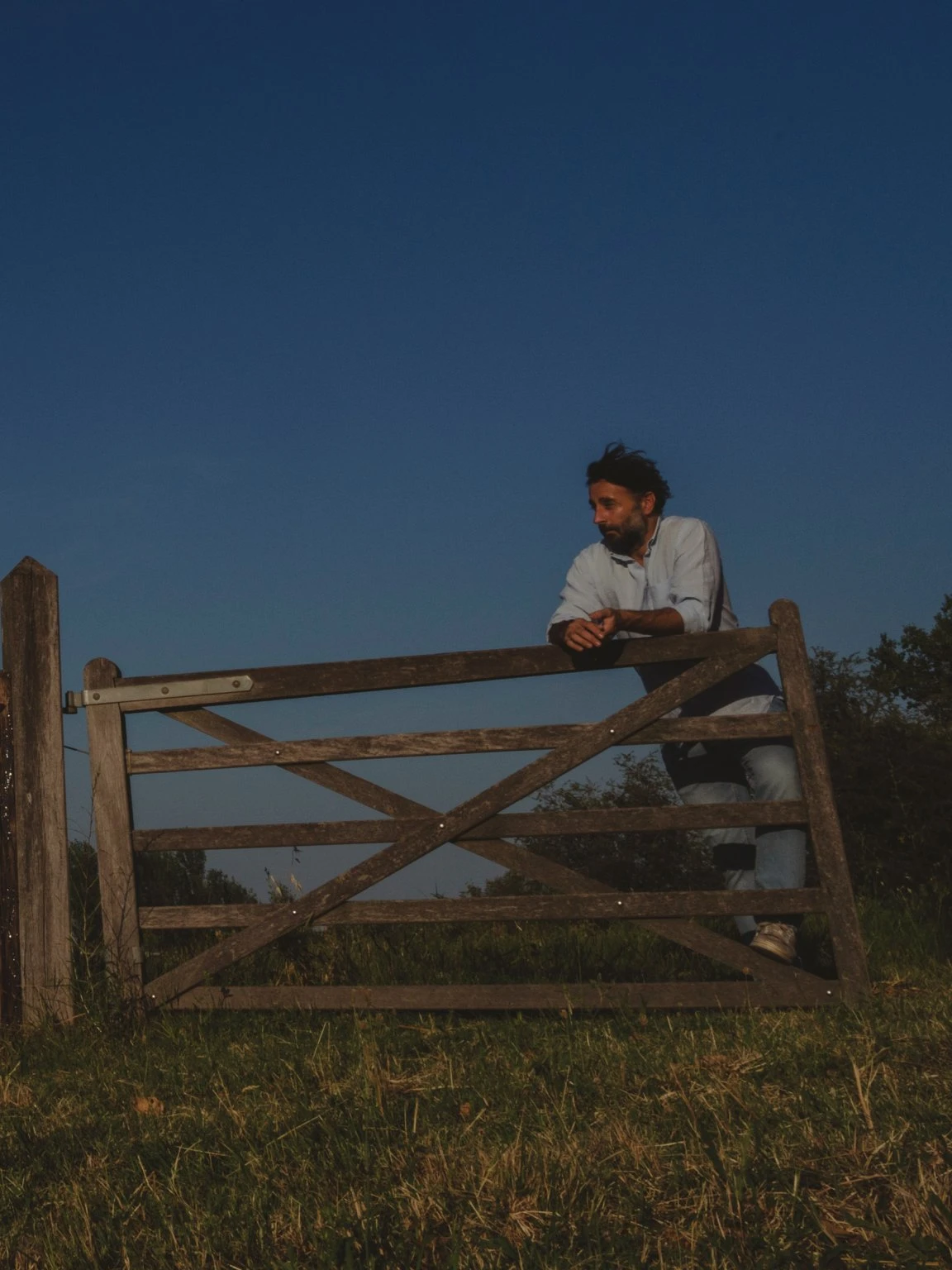
Domaine Les Capréoles
Just like art, wine is
an expression of
freedom: no one can
determine how to create it.
Cédric Lecareux is a producer of organic, biodynamic wine, for whom wine-making in its most natural sense is a matter of values, not solely of taste.
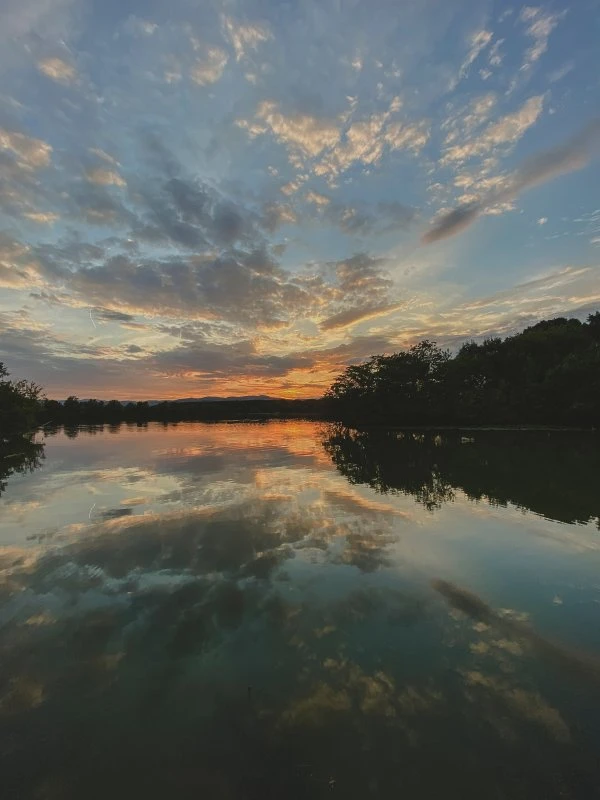
"You're in France, aren't you?" my friend Rexi asked excitedly after seeing my latest Instagram post. However, it's not the stories about wine or the photos of vineyards that made him think I’ve crossed the Alps. It's the unique atmosphere.
When you arrive in Beaujolais you actually have the feeling of entering into a different ecosystem; one made up of hills and valleys dotted with castles and villages, but also one of convivial lunches, country inns, bistros, outdoor cafes, wineries and Michelin-starred restaurants.
There is a place for every lifestyle and every mood, as long as you are in no hurry and have plenty of time to enjoy it. In fact, here the clock moves at the pace of ripening grapes.
It is 2 p.m. and, as I stand with Simona in the square before the imposing manor house at Domaine Les Capréoles, a scorching hot sun beats down upon us. The air is broiling and, with only the occasional puff of breeze to provide the most fleeting of respites (italics intentional!), it feels as if we’re standing in an oven.
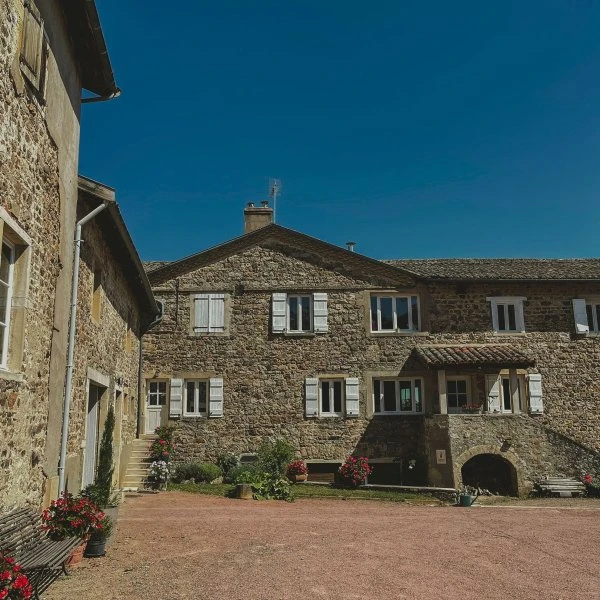
Dressed in a red T-shirt and khaki Bermuda shorts, Cédric bounds out the front door, a smile on his face and his hand already outstretched towards me. He wants to hurry through the formalities and get straight down to fun. "What the hell else would you be here for?" is the rhetorical question he asks us.
Since 2014, Cédric Lecareux and his wife Charlotte have been the owners of these 5.5 hectares in the small village of Régnie-Durette. After five years working as the manager of the Gérard Bertrand Group's estates, Cédric decided to buy his first 3 hectares. Since then, despite the fact that his commendably ambitious goal of converting production (firstly back to organic and then to biodynamic) hasn’t been without its challenges, he has never looked back.
We follow him into the shade (hurray!) of the estate's wooded area as he takes us on a tour of his vineyards, set on a south-facing slope.
Standing between two rows of vines, Cédric begins to draw in the air, just as if he had a paintbrush in his hand, outlining the borders of his domain and pointing out all the characteristics of the valley and the distant, but nevertheless effective, mountain range that shelters his grapes from the westerly winds.
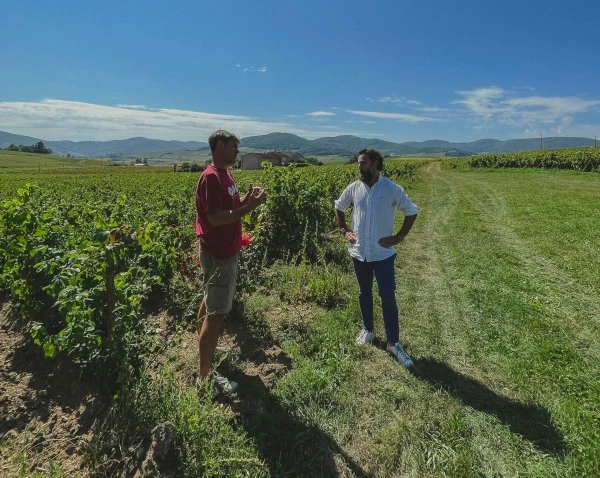
With a smile on his face, he recounts how difficult it was, at the beginning, to work on these vines.
Pruning the vines is fundamental to making a wine a great wine and Cédric’s first year with his new vines was uniquely challenging in this respect. Indeed, following many years of conventional viticulture, each vine had to be individually prepared to get it used to being worked by the plough.
The use of herbicides had, in fact, led the roots to wander along the surface and had accustomed the stumps to lean and bask on the ground, making it quite impossible for a plough to pass between the vines.
In that first year, with strains of the Rolling Stones ever in his ears, Cédric worked on each stump with his bare hands, like a gentle but implacable physiotherapist, determined to teach the afflicted how to regain mobility, function and dexterity.
He would go around the stump, examining it from all angles to find the point of best purchase. Then, embracing it in his arms, he would lift and recover it inch by inch, constantly gauging the strength of the wood, attentive to even the smallest of creaks, warning that breaking point was approaching.
The goal was to straighten each stump; mutilating it to bring it back into line, then supporting it with a stake to return it to an upright posture, projected up towards the sky, and thereby enabling the plough to return.
"You are dealing with nature and all its elements. You realise that she is the boss, it's not you who decides how much wine you will make that year... However, by working in tandem with her, being part of her team together with the sun, the clouds and the water, that’s what excites me most about this job."
We take our leave of the vineyards and make our way to the production area.
From painter to physiotherapist and now to Benedictine monk, Cédric leads the way, a huge bunch of keys clutched firmly in hand. Ancient keys, they are made to open centuries-old solid wooden doors, heavy to push as they rotate and squeak on their hinges.
We enter the production room and are assailed by a delightful air, fresh and natural. Simona and I decide that we're done with the parched world outside and that we're going to stay in here forever: refreshed and exquisitely cool.
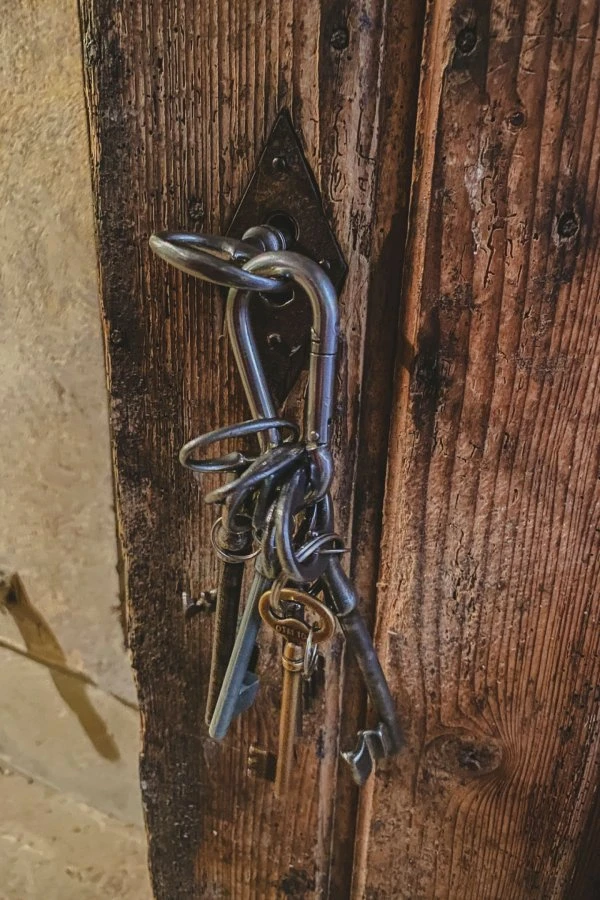
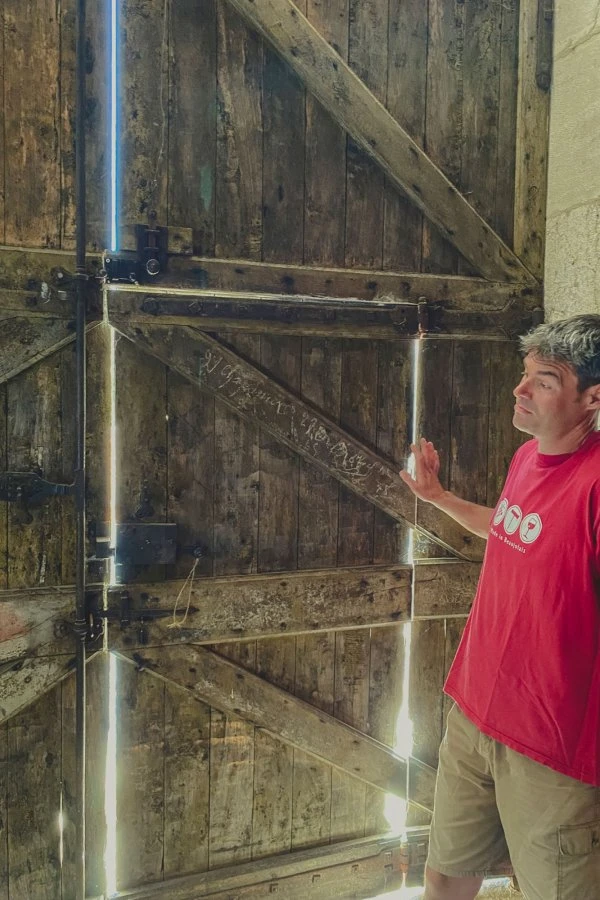
Here Cédric explains that in old French the name Capréoles refers to the tendrils of the vine. He and his wife chose this name because of everything it stands for and which is described on their website as follows: 'the reference to History and Tradition, the natural support that allows the vertical growth of the vine but also the idea of the relationship they want to establish with those who appreciate their work'.
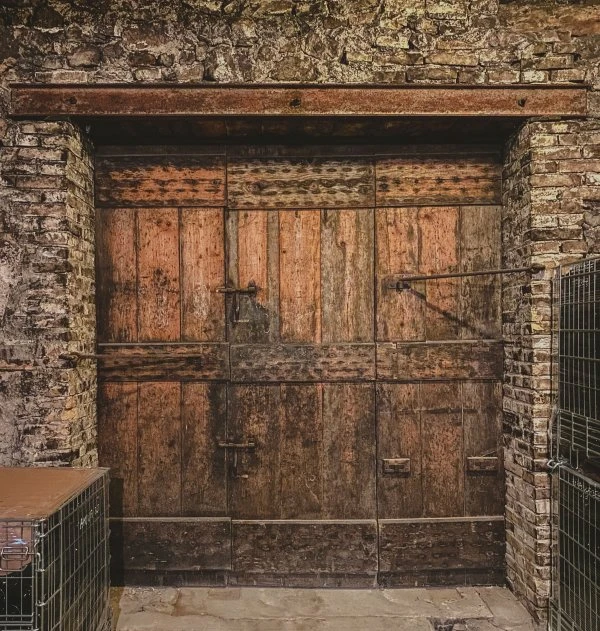
Cédric then goes on to tell us something that is not on the website: namely that the story of Domaine Les Capréoles is first and foremost the story of a love story between him, his wife and the estate’s previous owner.
For more than two centuries, the estate had been in the possession of the Mouton family. Cédric and Charlotte were enraptured by its venerable stones, enchanting wooded setting, ancient vaulted cellars and the adjacent vineyards. When they made their offer to the last descendant of family, Sophie, the latter made it clear that her willingness to sell was entirely conditional on the buyers’ acceptance of the estate’s continued transfer and running. Cédric and Charlotte assured her that they were more than willing to pass it down and ensure its continued running and... voilà, les jeux sont faits.
As I reflect upon his words, I am immediately struck by the following comparison: if the Tuscan wine regions are proud, sociable and easy-going, those here are equally proud, but more reserved and marked by family loyalties stretching back to distant times.
Immersed in these thoughts, my eye falls and lingers upon the statue of Saint Vincent, the patron saint of past and future vintages: it is reassuring to know that he will continue to watch over this room even after we have moved on to the barrel-ageing room.
Upon entering, we are assailed by a complex multiplicity of intoxicating smells: humidity, wood, mould, wood ash and mushroom.
Rooms like this are, in my personal opinion, the most authentic part of any visit. For a few seconds, it’s almost as if you were breathing the very wine itself, as if all the elements making it up are directly inside your nose.
It is not just that the air tastes of wine, it is the that wine has become air. And I'm here tasting it.
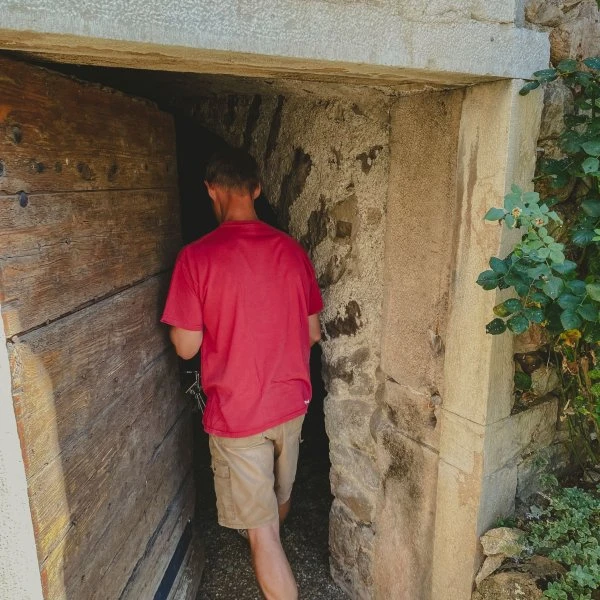
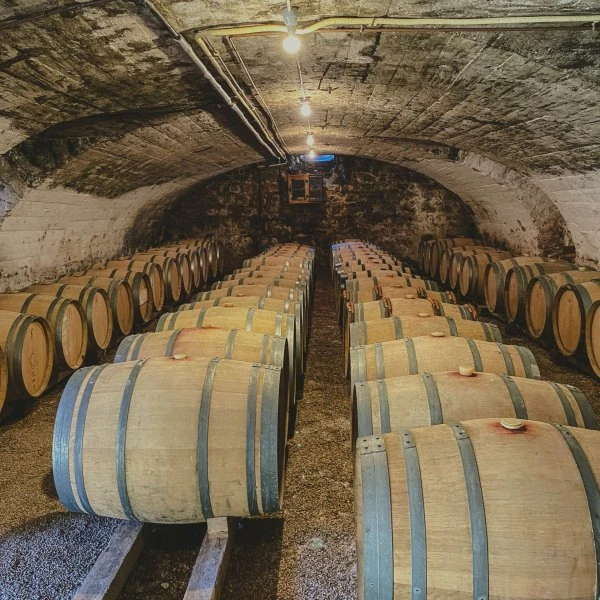
As I am whisked away, my nostrils flared to savour it to the full, Cédric explains to Simona that for him and most people like him, developing and drinking natural wine is much more than a question of taste; it is a question of values, and therefore a precise choice of conduct, a political stance if you will.
Subscribe
Every month we will present an unknown and exclusive winery we have discovered. Every month you will receive what we consider to be its best bottle delivered directly to your door: a wine that is always new, exclusive and surprising. At Christmas, 10% discount.
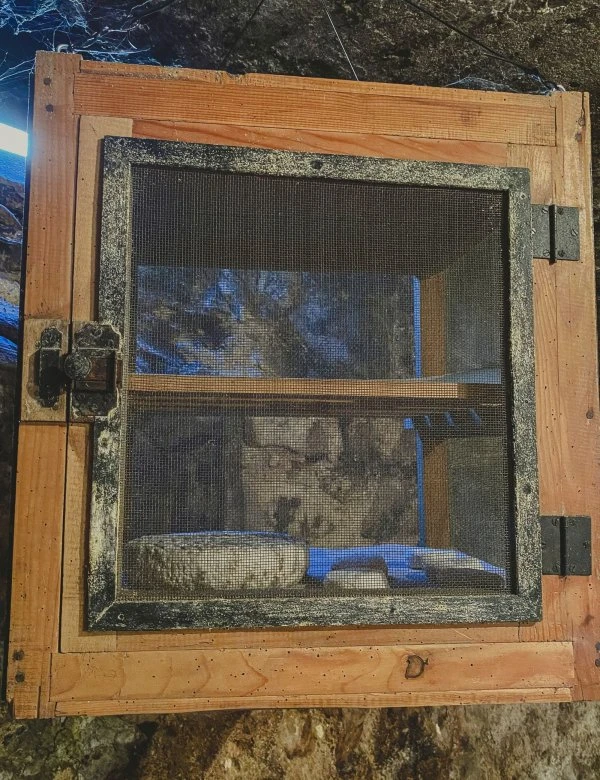
In France, the art of vinification is practiced by a select group of individuals whose membership is so limited as to almost be akin to a secret society. Governed by strict rules, only those who respect them and learn their etiquette, may gain the right to make wine. Natural winemaking, on the other hand, is entirely different. Sharing and collaboration are fundamental: instead of closing oneself off within a narrow and select circle, the inclusion of and openness to every provenance, cultural reference and budget are actively encouraged.
The time has come for us to begin our tasting. Seated under the vaulted ceiling, we follow Cédric with our eyes as he arranges a series of bottles before us on the table.
With my paltry French, I try to decode the names on the labels but Cédric comes to my rescue: it's not my fault if I don't understand, they are all made-up names, most of which invented by his daughter.
Here is what I learnt.
Amourgandise is the amalgam of the words amour and gourmandise meaning "to eat with gluttony". One day little Margot said that what she felt about chocolate was “Amourgandise”. No sooner said than done: from neologism to the name on a label.
Chamodère is a portmanteau of chameau, which means “camel”, and dromadaire, which means “dromedary”. As a child, Margot struggled to distinguish the two animals due to their differing number of humps. Thus she coined the word "Chamodère" and now everyone is happy.
Hydrophobe, on the other hand, is not a neologism. It's just to playfully emphasize the local saying which, so they tell me is: “we prefer to drink wine rather than water". Sorted.
I like them all, and not just for their quirky and imaginative names. However, if I had to choose, my pick would be Axiome. This time, however, the name is not a fictional one and the word, in French as in English, needs no further explanation.
Likewise, no explanations are required to convince us that this wine is a masterpiece. Exquisitely crafted, just like the others, it has something different about it, something that speaks to me on an emotional level, as well as a sensory one, and that I would therefore define as artistic. I realize that I may not be making myself clear, but I still attempt, in my own way, to share this thought with Simona and Cédric; and he, in his own way, must have understood something, because he replies, as if following me: “just like artistic production, wine production is a form of freedom, no one can determine how to create it.”
Axiome, L’Amourgandise, Hydrophobe, Sous la Croix and Alio Pacto are the Beaujolais wines produced by Domaine Les Capréoles that we have selected for you. And, in this order, they make us think about: anarchy, fun, imagination, nobility and creativity.
In latter years, southern Burgundy has opened up to art, gastronomy and foreigners, who are now buying holiday homes in the area. And the best news for us is that the wines of Beaujolais are growing and improving with every passing year. Cédric's labels are proof of this; indeed, they are the very axiom.
We didn’t stick to our decision. Perhaps the tasting has erased all traces of it from our memory.
We are once again back in the sun, still blazing hot, but we barely notice: we are too caught up in Cédric and his - what did he call it, earlier? - choice of conduct.
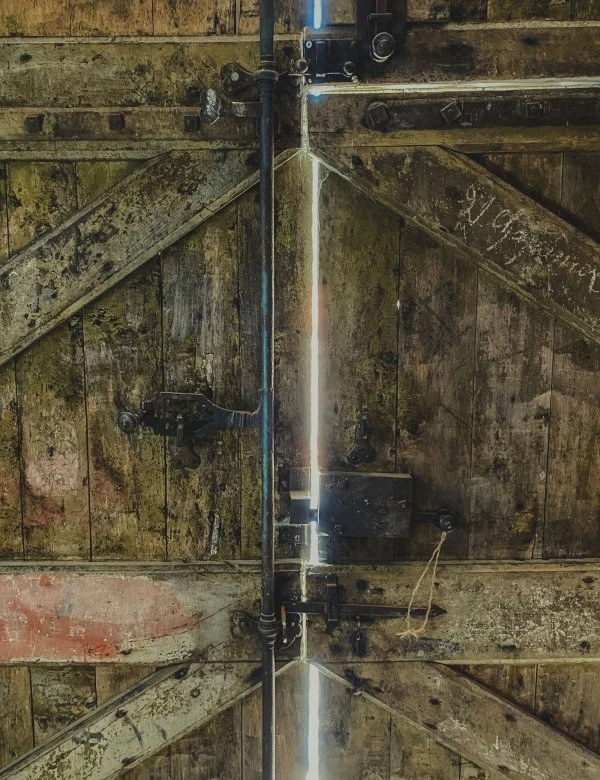
Chatting with Cédric has truly been a pleasure. Enterprising and visionary, his energy has put us in a good mood and, despite the heat, we feel decidedly upbeat.
As we say our goodbyes, he stands motionless under the sun. Not because he’s watching us leave, but because he’s gazing up at the clock: he is waiting for his Margot, the wine whisperer, to come home from school and run up the driveway.
Gunter's other travels
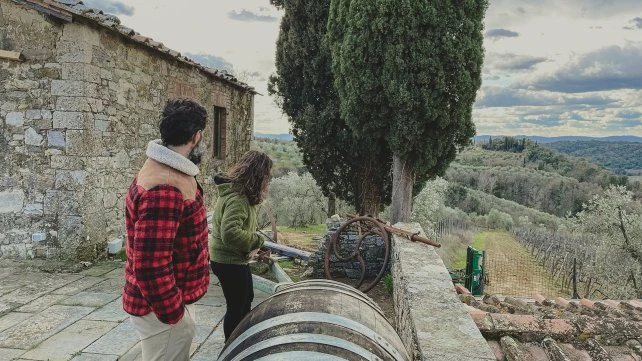
Tuscany
Azienda agricola
La Lama
We make the wines we love; not what market rules dictate.
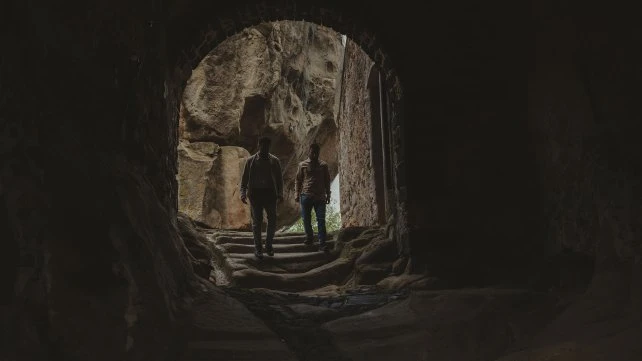
Sicilia
I Vini di Luca
This vineyard speaks. It tells the story of a family and all the work devoted to attaining the highest quality possible. This is where you can see all my father's experiments.
